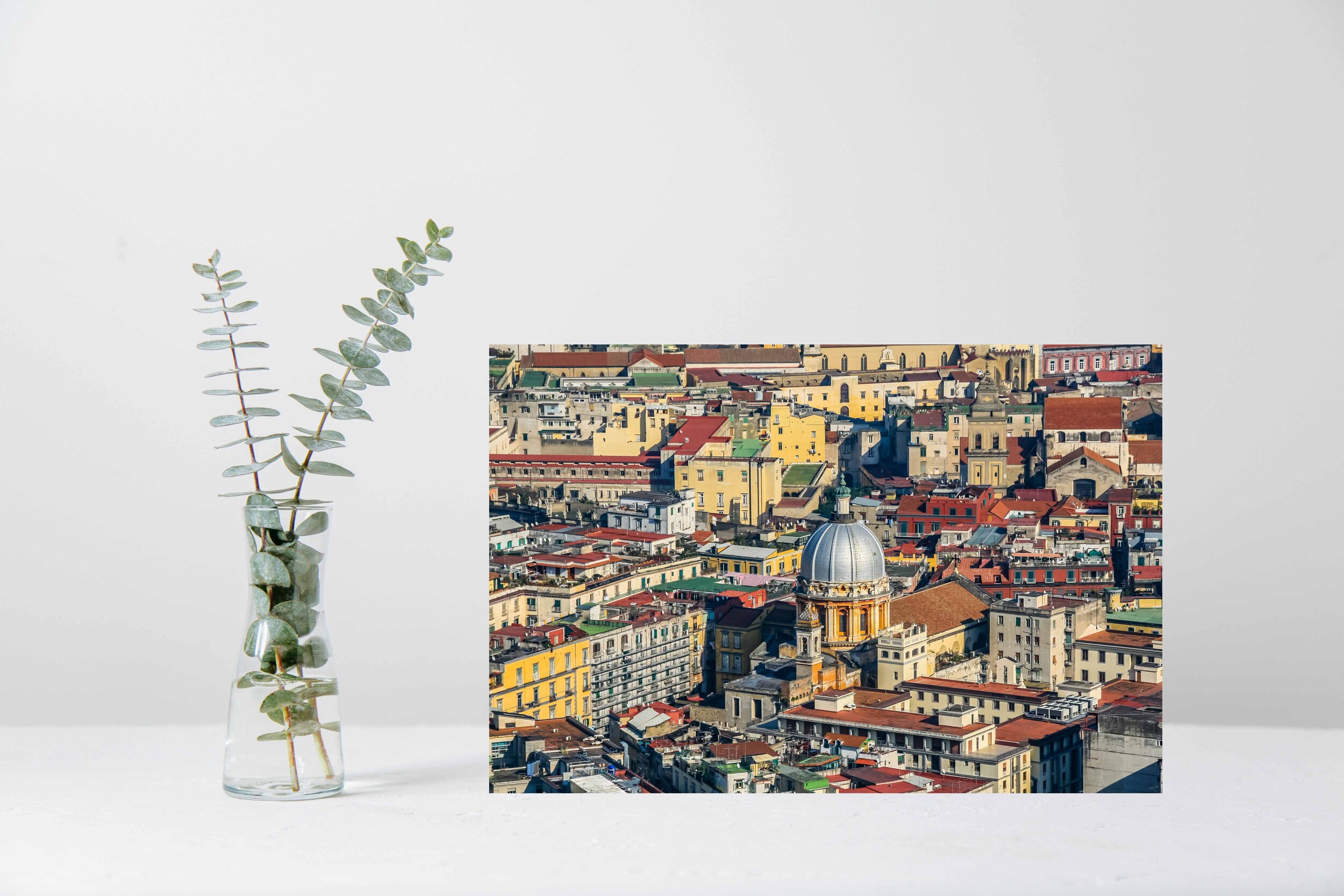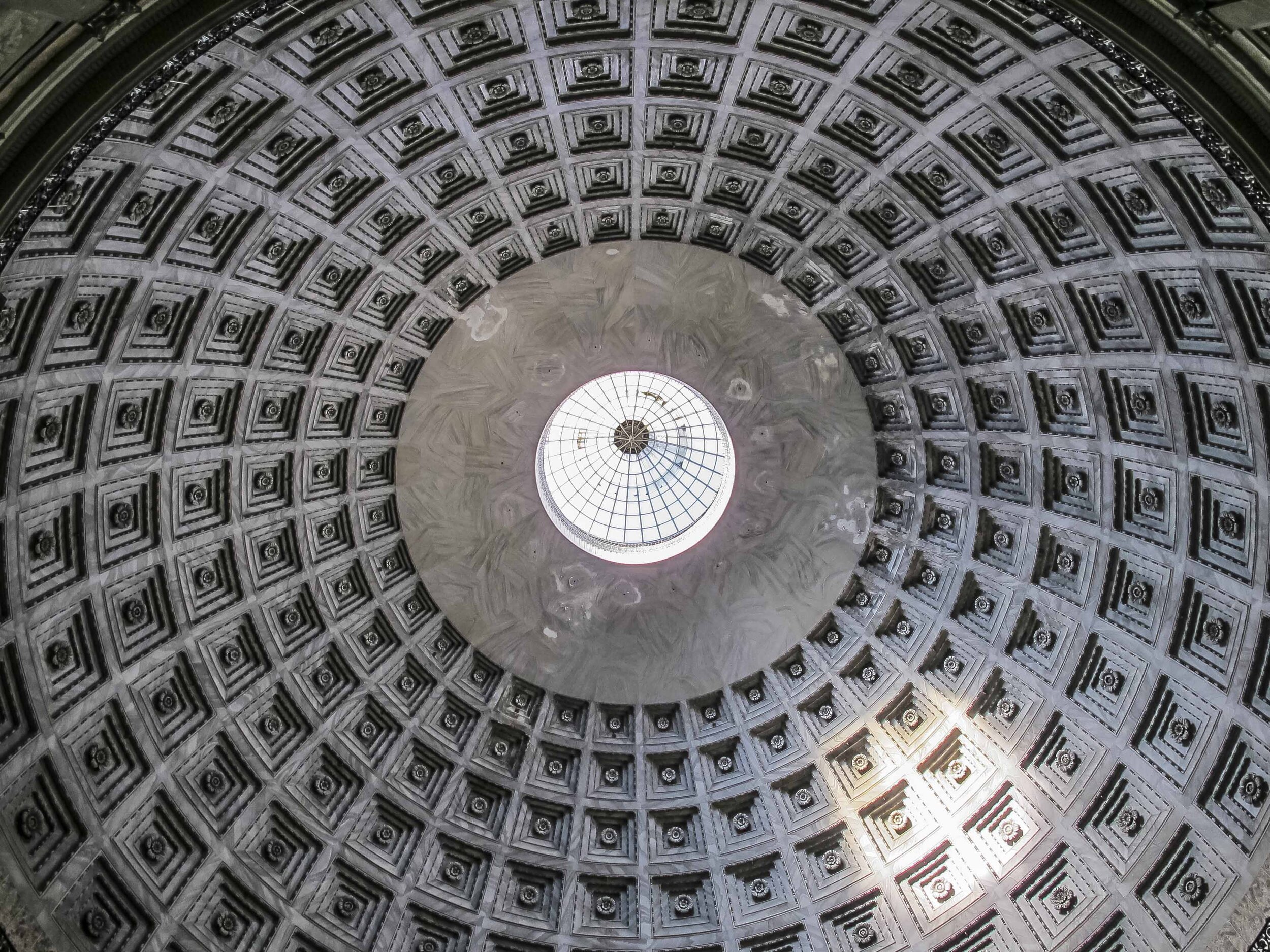Easter in Naples – It’s All About the Pastiera
I went down to the Salumeria (our neighborhood grocer/deli) the other day, and I knew immediately that the Easter season was upon us. No, there were no Easter baskets or bags filled with green, yellow and pink Easter grass falling off the shelves. No PAAS Easter Egg dying kits or Easter hams (unless you count Prosciutto Crudo). And there certainly weren’t any Easter basket staples – the all important chocolate bunnies, Cadberry eggs, marshmallow peeps, or jelly beans. Instead, the shelves were stacked up to the ceiling with hundreds of chocolate Easter Eggs of all sizes, from the miniature to the gargantuan. A prize hidden inside, each egg is wrapped up in shiny Easter colored foils and tied with a bow.
All over the floor and blocking my way to every shelf in the store, giant Pyramids had been erected out of the classic Italian boxed cakes. On the deli counter, the customary round tin decorated in wrapping paper and marked Buona Pasqua, Happy Easter, a gentle reminder to pay homage to the employees by dropping a few coins or a few Euro in the can. And next to that, the true signs of Easter – the ingredients for the Neapolitan Easter pie, Pastiera. Cans of Gran Cotto (cooked wheat), viles of Orange Blossom Water, and tubs filled with candied citron and orange.
A traditional dessert you will find on every Neapolitan table, Pastiera is as synonymous with Easter here as is its counterpart, Casatiello. Just like there would be no Thanksgiving without a turkey in the States, there is no Easter here without Casatiello and Pastiera. A ricotta and cooked wheat pie, Pastiera is a cheesecake if you will, but on steroids. Made several days in advance, the process is a bit difficult to master and very time consuming, but it is a true labor of love for the Neapolitan cook. A recipe passed down from one generation to the next, few Neapolitans would serve Easter dinner without it.
An enduring tradition, legend has it that the seven ingredients of Pastiera were offered by seven maidens to the Siren Parthenope. Flour and grain – the fruits of the earth, eggs signifying the renewal of life, ricotta cheese in homage to the shepherds, orange water, candies and sugar, the perfumes and sweetness of spring. A more recent story tells it that Pastiera was invented by a nun from the Convent of San Gregorio Armeno in Naples as a symbol of the resurrection. The significance of the ingredients is pretty much the same, with special emphasis on the eggs for rebirth and the fragrance of orange coming from the flowers of the orange trees that grew in the convent.
Today the tradition lives on in every kitchen in Naples. A few days before Easter, mothers, daughters and grandmothers will assemble in the kitchen to make the family’s well guarded recipe. Each Neapolitan cook has her own, and like all things involving cooking here, theirs will invariably be the best and only they know the hidden secrets of Pastiera.
The best cooks do everything from scratch, from soaking and cooking the wheat to making the pastry. The wheat is soaked for two or three days, cooked and then combined with a mixture of milk, butter, sugar, lemon zest, and cinnamon and cooked again until the milk reduces. The ricotta is drained, left to sit over night and then mixed with sugar, eggs, orange blossom water, and candied citron and orange peel. These two mixtures are then combined and baked in a short pastry. The best pastries are made by hand and use a combination of butter and lard and the zest of one lemon (a little secret you won’t find in most recipes online). There are short cuts of course, you can use Gran Cotto – cooked wheat in a jar or can (which many Neapolitan cooks are now using) and you can get a ready made pastry dough – but where would be the fun in that. If you want the true experience you’ll have to do it from scratch.
My good friend Livia gave me a recipe the first year I lived here. Written completely in Italian, it took me two dictionaries and hours to translate and it was a complete bomb the first time I made it. Turns out you have to cook the Pastiera for quite a bit longer than the hour I cooked it and then you have to let it rest for two or three days for the flavors to develop – a few facts that got lost in translation. I tried a few more times, but I’m not ashamed to admit that I have yet to master this fine art so I get mine at the Pasticceria. Perhaps its something you just have to grow up doing.
Since I am obviously no expert and there are as many recipes on the web as there are cooks, I leave that to you to seek out. Below are just a few of the great recipes you can find for this traditional dish. Like all Neapolitan recipes however, you will have to play with the ingredients for a while until you create your own secret version of this time honored recipe.
Since writing this post, Giuseppe’s (Cooking with Giuseppe) lovely sister Anna has been kind enough to share her Pastiera Recipe along with the secrets to making this delightful Easter dessert. I hope you enjoy it!
Easter in Naples – It’s All About the Pastiera was first published on NapoliUnplugged.com on March 31, 2010.
images From Napoli
Learn More
She Studios is a participant in the Amazon Associates Program, among other affiliate programs, an affiliate advertising program designed to provide a means for sites to earn advertising fees by advertising and linking to Amazon.com and other websites. As an Amazon Associate She earns from qualifying purchases.













